François Champsaur: how do we make a design that is alive?
For the French interior designer, tackling the climate emergency means reducing our ecological footprint and avoiding dead materials
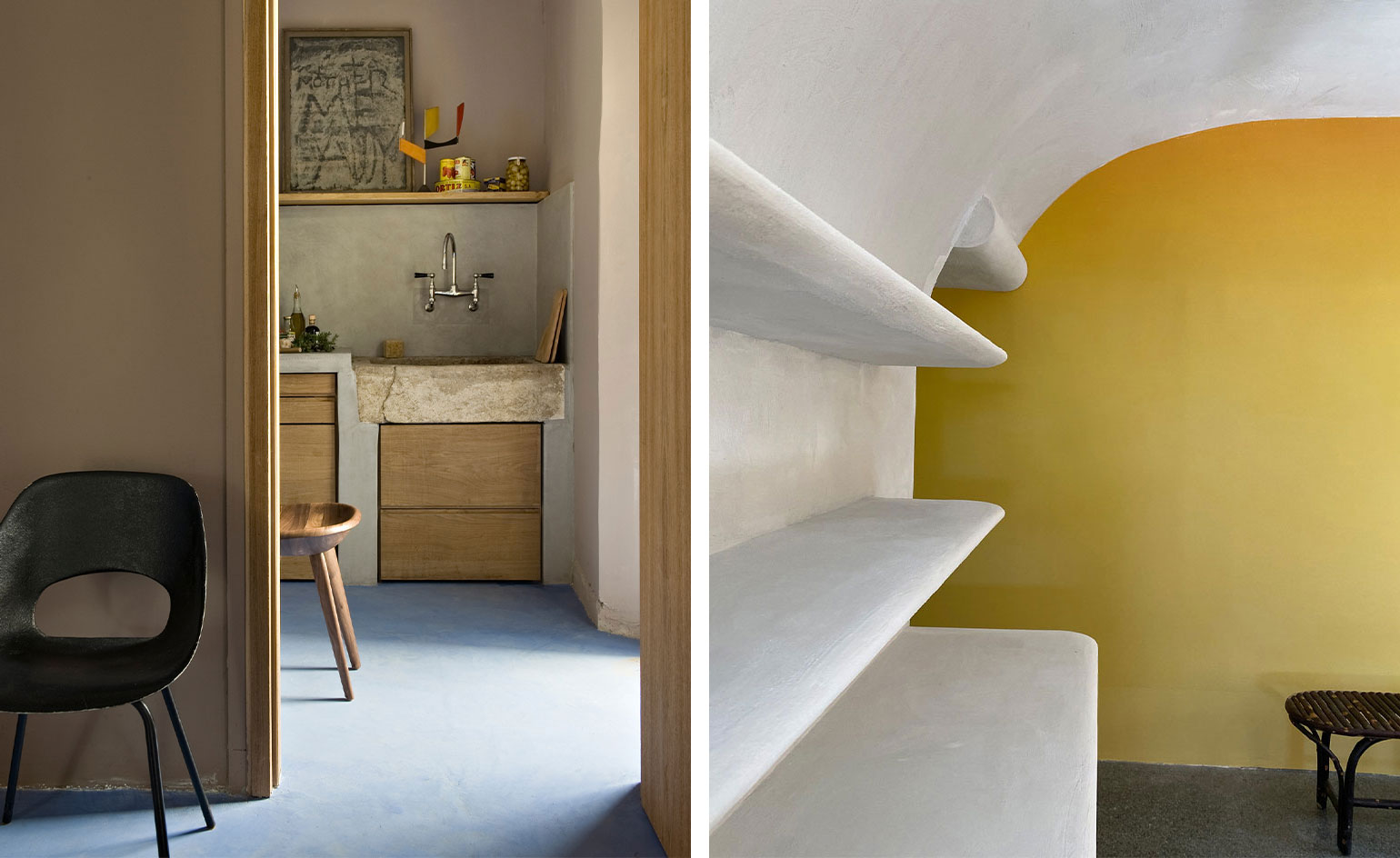
Faced with the climate emergency, many of us see no other option than to bury our heads in the sand or, at most, switch to recyclable or secondhand designs where we can. Not so French designer François Champsaur, who, in the past few years, has largely turned away from the big projects that made his name – such as the Hôtel Vernet in Paris and Le Bailli de Suffren on the Côte d’Azur – to move back to his native Marseilles and focus on smaller-scale designs, including his own ‘cabanas’ in Marseilles and Mallorca.
He has narrowed down his list of clients, reduced his ecological footprint, and eschewed supermarkets in favour of local organic schemes. In his new take on the ‘less is more’ mantra, ‘less’ refers not so much to a certain minimalist aesthetic but to an entire downsized way of life.
François Champsaur: ‘We cannot continue to make plastic chairs’
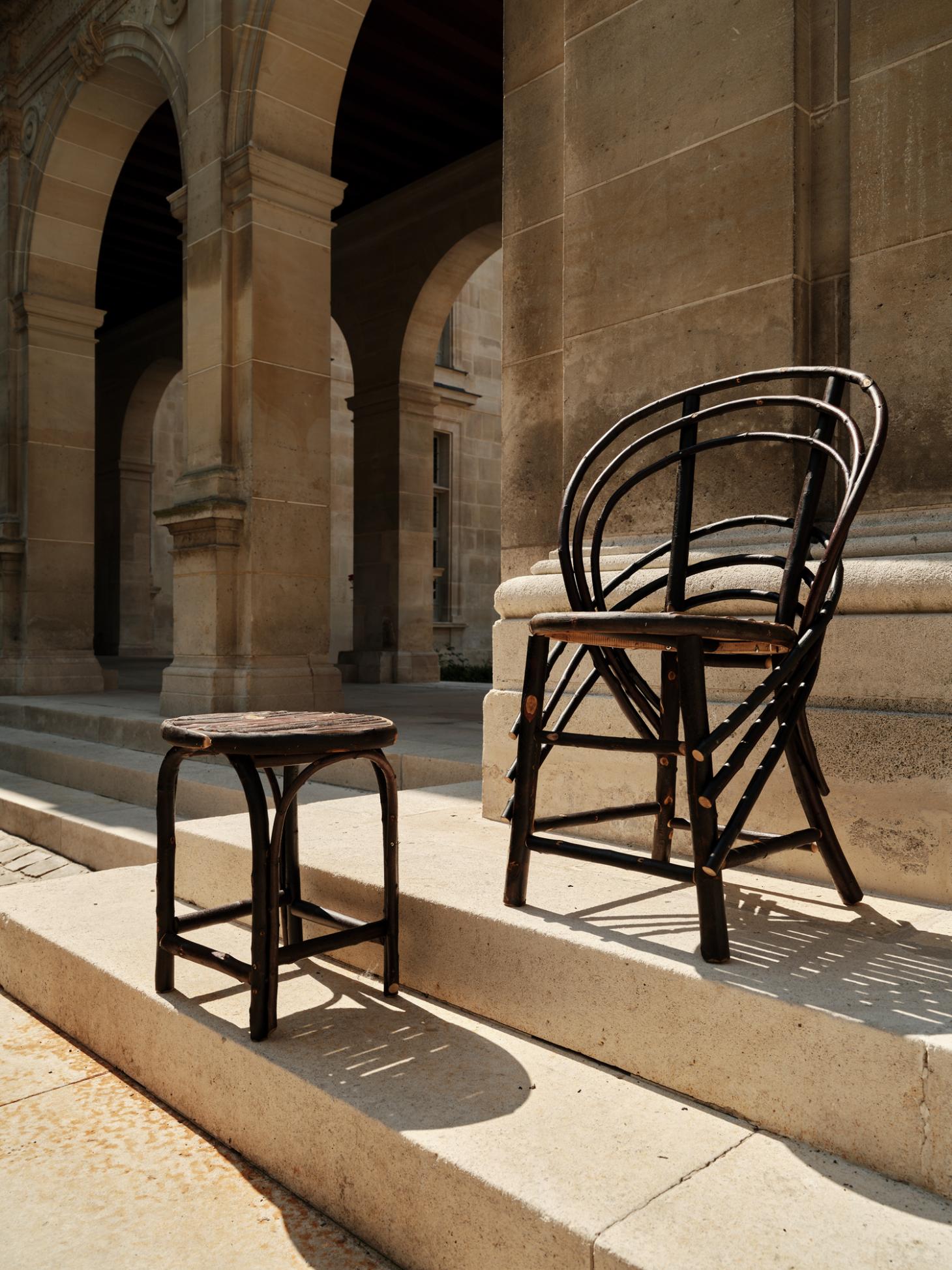
Chestnut furniture for the Musée Carnavalet’s restaurant in Paris
‘I follow the idea of décroissance, or degrowth: less income and a much simpler standard of living, in order to have the freedom to choose my projects – projects where ecology is taken into account,’ says Champsaur.
The designer views our current situation as a brutal comedown after decades of excess. ‘The world we have built in the past 50 years is based on consumption, on ultra-liberalism; there is permanent abundance for some, and nothing at all for others,’ he says. ‘We think we are happy because we have access to everything, but it’s like a big shot of illicit substances – now we’re seeing the consequence of this artificial happiness.’ What was hidden from sight is now impossible to ignore: ‘We hide everything we don’t like – industrial waste, radioactive waste, polluted rivers. But today, everything is coming to the surface. This is why it is necessary to evolve, to find the know-how, to experiment, and to become humble again.’
Humble towards the power of nature and the beauty of our planet, which we have neglected for so long: ‘We are at a very important historical, moral and aesthetic crossroads: we must reconnect with the Earth.’ And this goes for designers, too, of course: ‘Ecology and neoliberalism are totally incompatible. As the ecologists say, in a very precise phrase: there is no infinite growth in a finite world. And if designers do not realise this, they will disappear.’ His solution, first fully explored during his stint as jury president at the 2019 Design Parade Toulon, where he organised an exhibition titled ‘Resuming Natural Discussions’, is to focus on ‘natural design’ using 100 per cent natural materials, which have to be ‘compostable and reusable’.
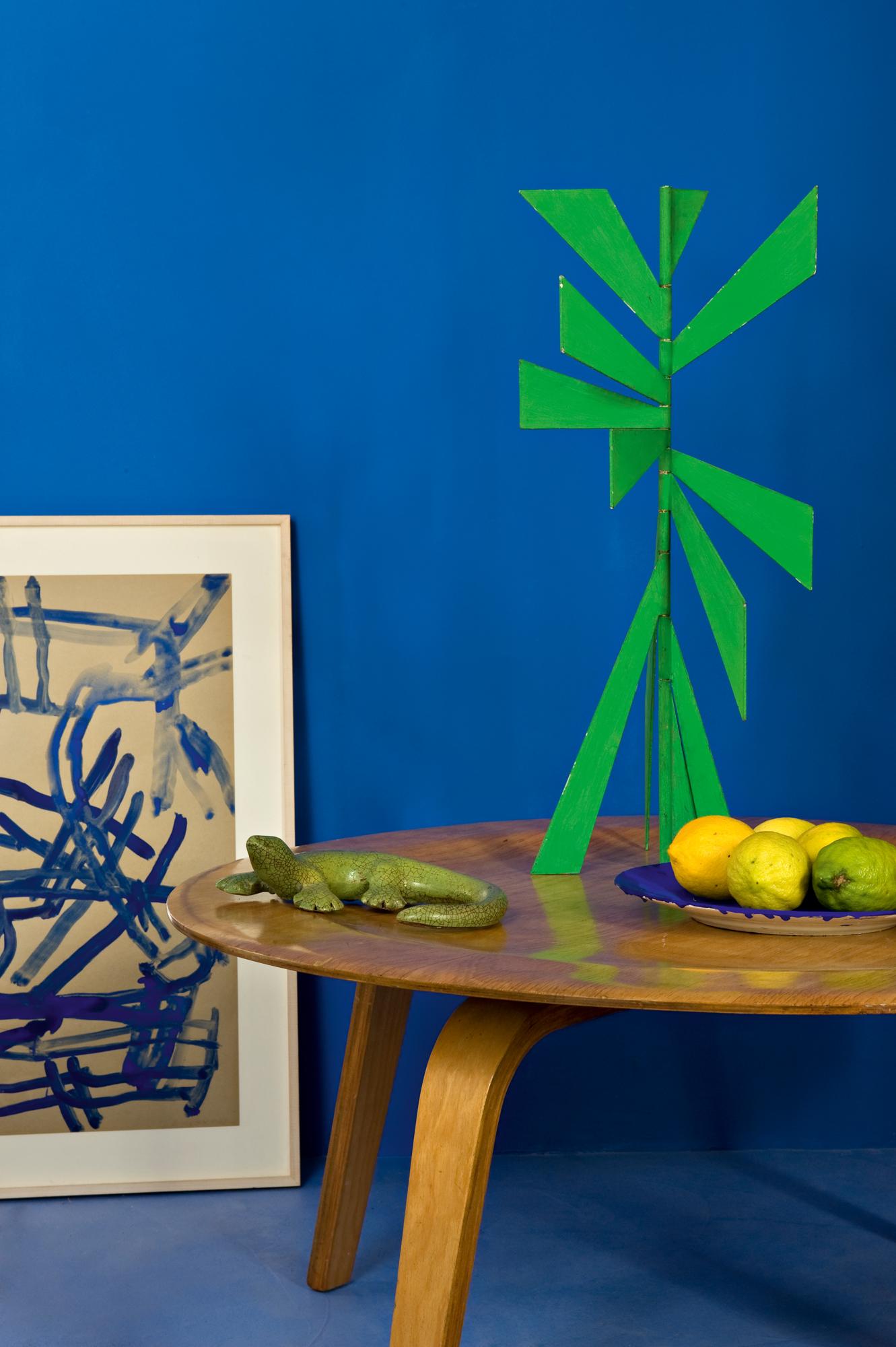
Champsaur’s house in Marseilles
For Champsaur, this means using anything but plastic: ‘We made people believe that we could reuse plastic. This is false; 80-90 per cent of plastic ends up in garbage cans, in the oceans. The only thing to do is to use materials that are as unprocessed and natural as possible.’ His materials of choice include terracotta (a passion inherited from his ceramicist mother), with which he created the ‘Utopie Frugale’ table; or chestnut, which he used to fashion furniture for the Musée Carnavalet’s restaurant in Paris. ‘If you use earth, wood, plaster, lime, you can return them to nature, compost them.’ Although many designers of his generation do not seem to be interested in these organic materials, Champsaur is enthusiastic about new talent, including young designers such as Samuel Tomatis, who uses seaweed, or Champsaur’s close collaborator Samy Rio, who researches invasive plants, and has worked with the Luma Foundation, an Arles-based organisation set up to support the activities of independent artists and pioneers.
‘With all these things still to be invented, we cannot continue to make plastic chairs,’ continues Champsaur. ‘Design is both content and form; if the substance is void, the form is void.’ The designer goes one step further, adding: ‘I think we also have to give up 3D and digital techniques a bit to come back to the intelligence of the hand. I make terracotta models to visualise my projects. It’s more pleasant to work with organic, living materials, not dead materials. In fact, this is the fundamental question for the next few years: do we make a design that is alive?’
Wallpaper* Newsletter
Receive our daily digest of inspiration, escapism and design stories from around the world direct to your inbox.
Approaching new collaborations
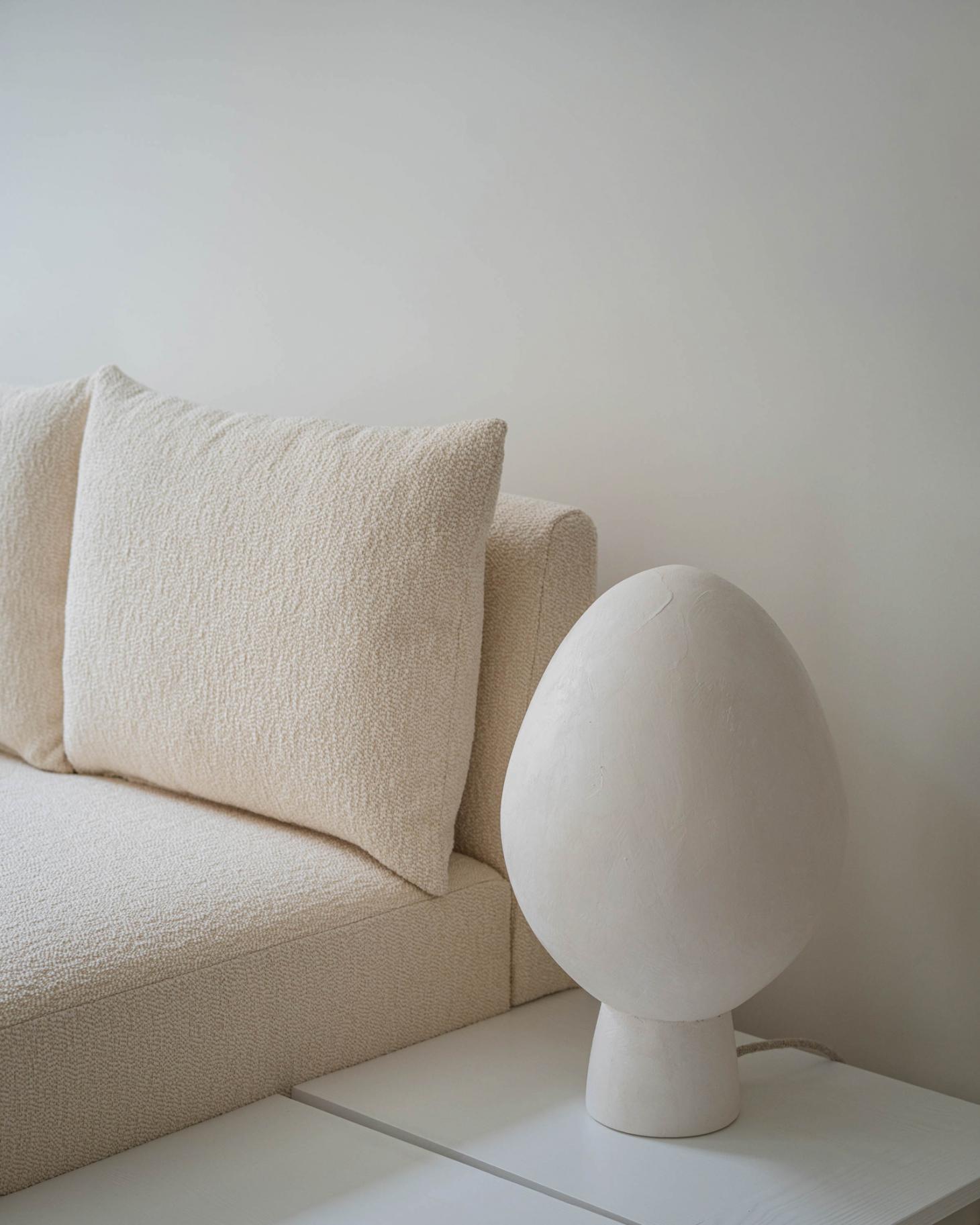
Champsaur’s furniture designs for the Madrid Edition include plaster table lamps
This issue came to the fore in his latest big collaboration, the furniture for Ian Schrager’s new Edition hotel in Madrid, designed by John Pawson. It was a commission he felt he couldn’t refuse, but it tested his passion for all things natural. ‘To change things, you have to be convinced yourself. If one is only half convinced, it is difficult to convince others,’ he says. But it seems his commitment to a new ‘natural design’ is utterly convincing: all the hotel’s new guest room furniture has been made with Champsaur’s trademark materials, including wood, wool and plaster.
Plaster, hemp, lime and compacted earth all feature in the designer’s two houses on the Mediterranean, which he uses as laboratories to explore new ideas, working with local artisans to create unique pieces and finishes, a process in complete contrast to how most houses are built today. ‘People bring in tiles from Italy, windows from Poland – it’s just about assembly. There are two problems with this: visually, it’s ugly; plus, it destroys the local know-how,’ he says. ‘We can no longer do assembly like that – it’s aesthetically, ecologically, politically and socially irresponsible.’ Champsaur also believes that the current architectural aesthetic, with large bay windows cooled by air-conditioning, is not viable anymore, that we should go back to traditional solutions to cope with the weather: ‘Houses in the south of France all had a plane tree at the front to create shade in summer – it helped decrease the temperature by five or six degrees.’
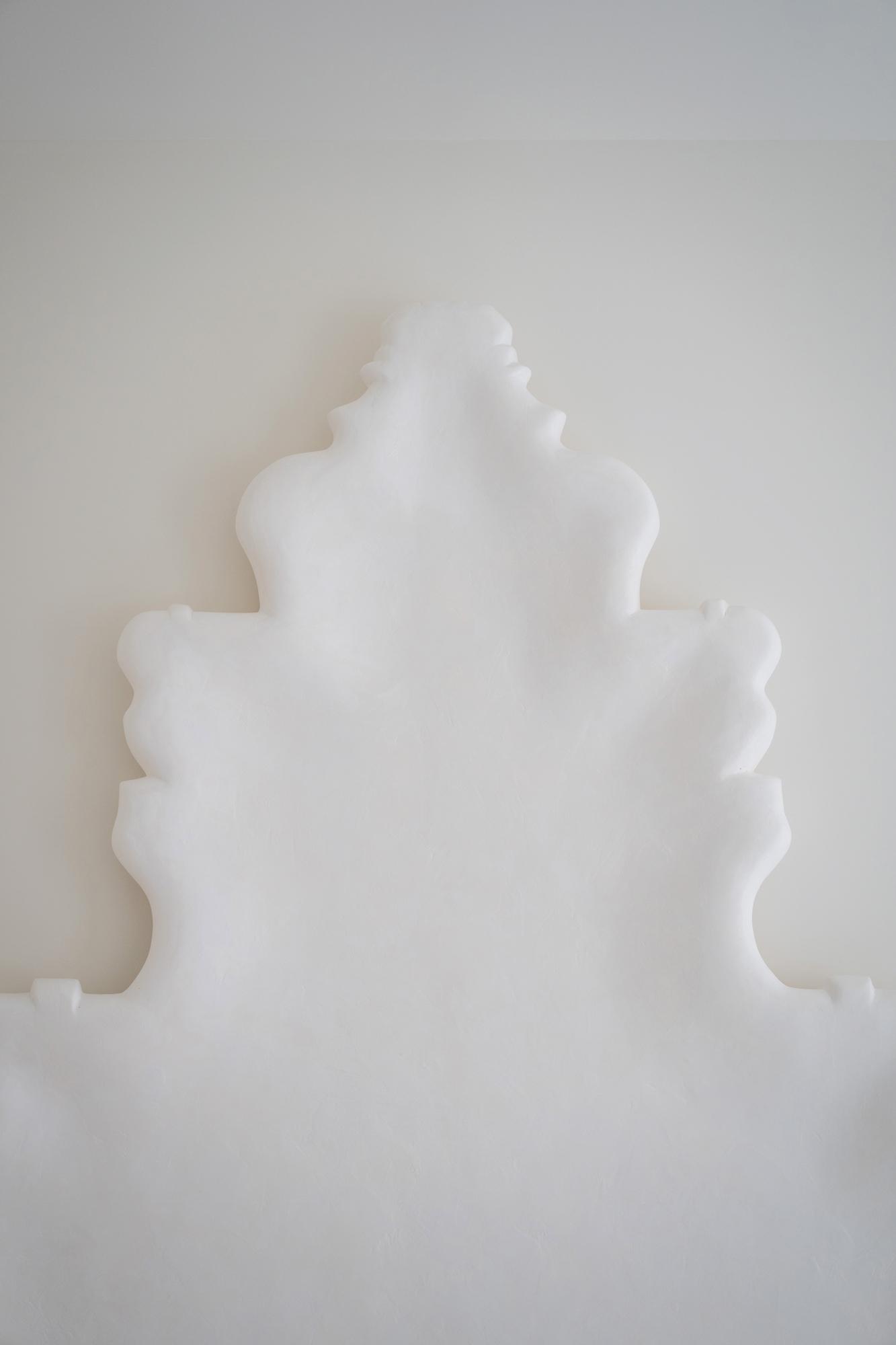
Part of the Madrid Edition Hotel project are these striking plaster headboards, inspired by the hotel’s landmark 18th-century baroque stone portal
Surrounded by greenery and traditional canisses, or reed screenings, his own house in Marseilles is also his studio, from which he has been working on his latest project: new interiors for the shop at Villa Noailles, which will include pieces made from stone, chestnut, plaster and local reed. Also in the works is a collection in collaboration with other designers, including Samy Rio, focusing on happy small-space living. It is not by chance that a very specific type of design is coming back to the fore today: ‘When we look at auctions and the furniture that is highly collectible, it is pre-industrial furniture by the likes of Charlotte Perriand, Jean Prouvé or Jean Touret. All these designers worked in tandem with craftsmen; they were very close to the material and very attentive to the work of the hand of man, and not of the machine.’
Those brave enough to face our environmental and societal problems will find renewed energy and inspiration in a different, gentler way of living, more attuned to our local community and geography. ‘You will have to be really optimistic, clever and pugnacious to change the model. It’s a moral issue because we can’t leave our children a field of ruin, can’t say we tried and didn’t succeed,’ says Champsaur. ‘It’s also an aesthetic issue, as we must invent new ways of creating and consuming, as well as manufacturing less, and manufacturing locally.
Information
The August 2022 Design for a Better World issue of Wallpaper* is available from 14 July in print, on the Wallpaper* app on Apple iOS, and to subscribers of Apple News +. Subscribe to Wallpaper* today
Léa Teuscher is a Sub-Editor at Wallpaper*. A former travel writer and production editor, she joined the magazine over a decade ago, and has been sprucing up copy and attempting to write clever headlines ever since. Having spent her childhood hopping between continents and cultures, she’s a fan of all things travel, art and architecture. She has written three Wallpaper* City Guides on Geneva, Strasbourg and Basel.
-
 All-In is the Paris-based label making full-force fashion for main character dressing
All-In is the Paris-based label making full-force fashion for main character dressingPart of our monthly Uprising series, Wallpaper* meets Benjamin Barron and Bror August Vestbø of All-In, the LVMH Prize-nominated label which bases its collections on a riotous cast of characters – real and imagined
By Orla Brennan
-
 Maserati joins forces with Giorgetti for a turbo-charged relationship
Maserati joins forces with Giorgetti for a turbo-charged relationshipAnnouncing their marriage during Milan Design Week, the brands unveiled a collection, a car and a long term commitment
By Hugo Macdonald
-
 Through an innovative new training program, Poltrona Frau aims to safeguard Italian craft
Through an innovative new training program, Poltrona Frau aims to safeguard Italian craftThe heritage furniture manufacturer is training a new generation of leather artisans
By Cristina Kiran Piotti
-
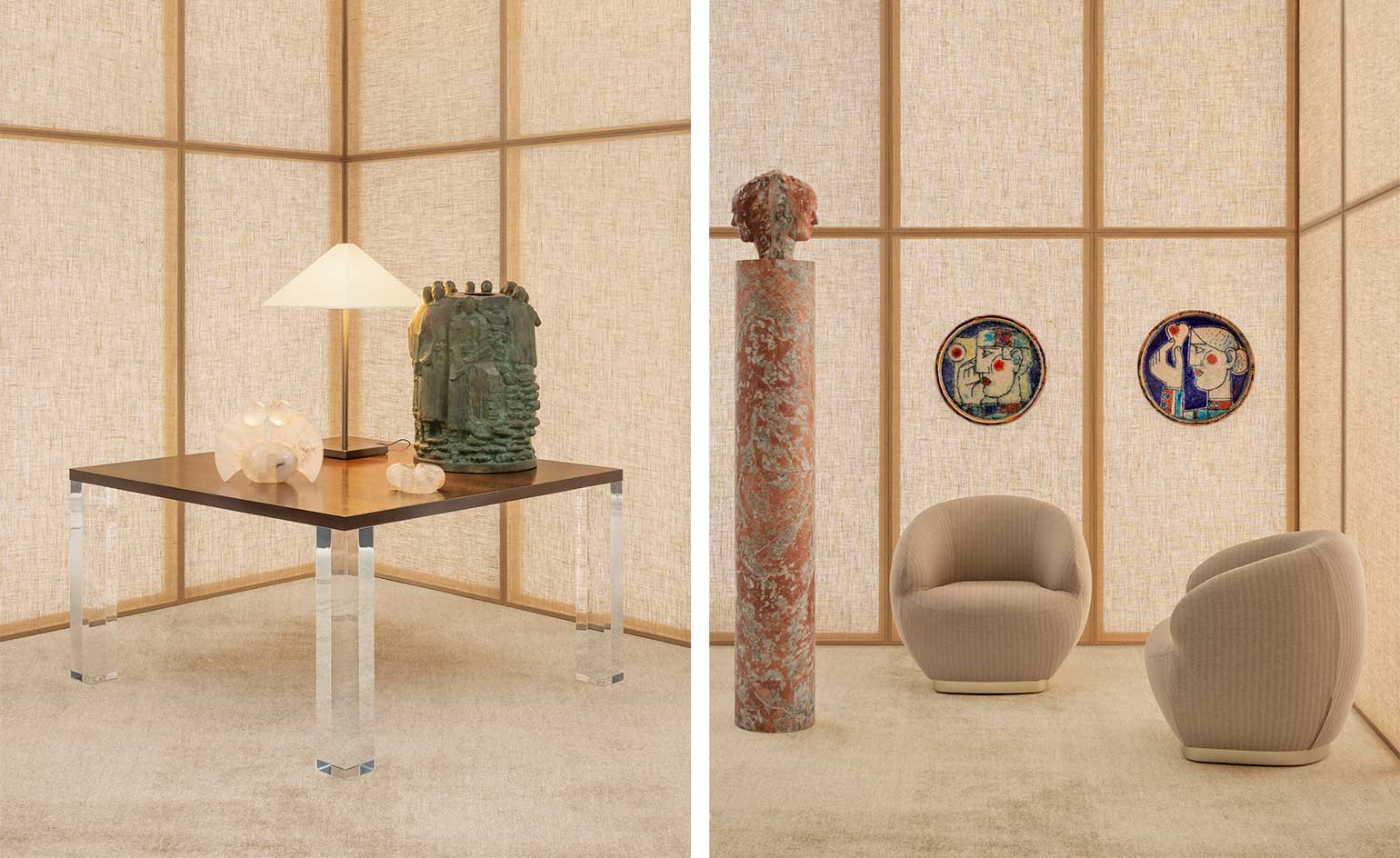 Art, artefacts and Armani Casa: step into our Made in Italy showcase
Art, artefacts and Armani Casa: step into our Made in Italy showcaseIn this photographic series, we combine Armani Casa’s timeless furniture collections with Italian art and rare artefacts to tell the story of Made in Italy craftsmanship
By Nick Vinson
-
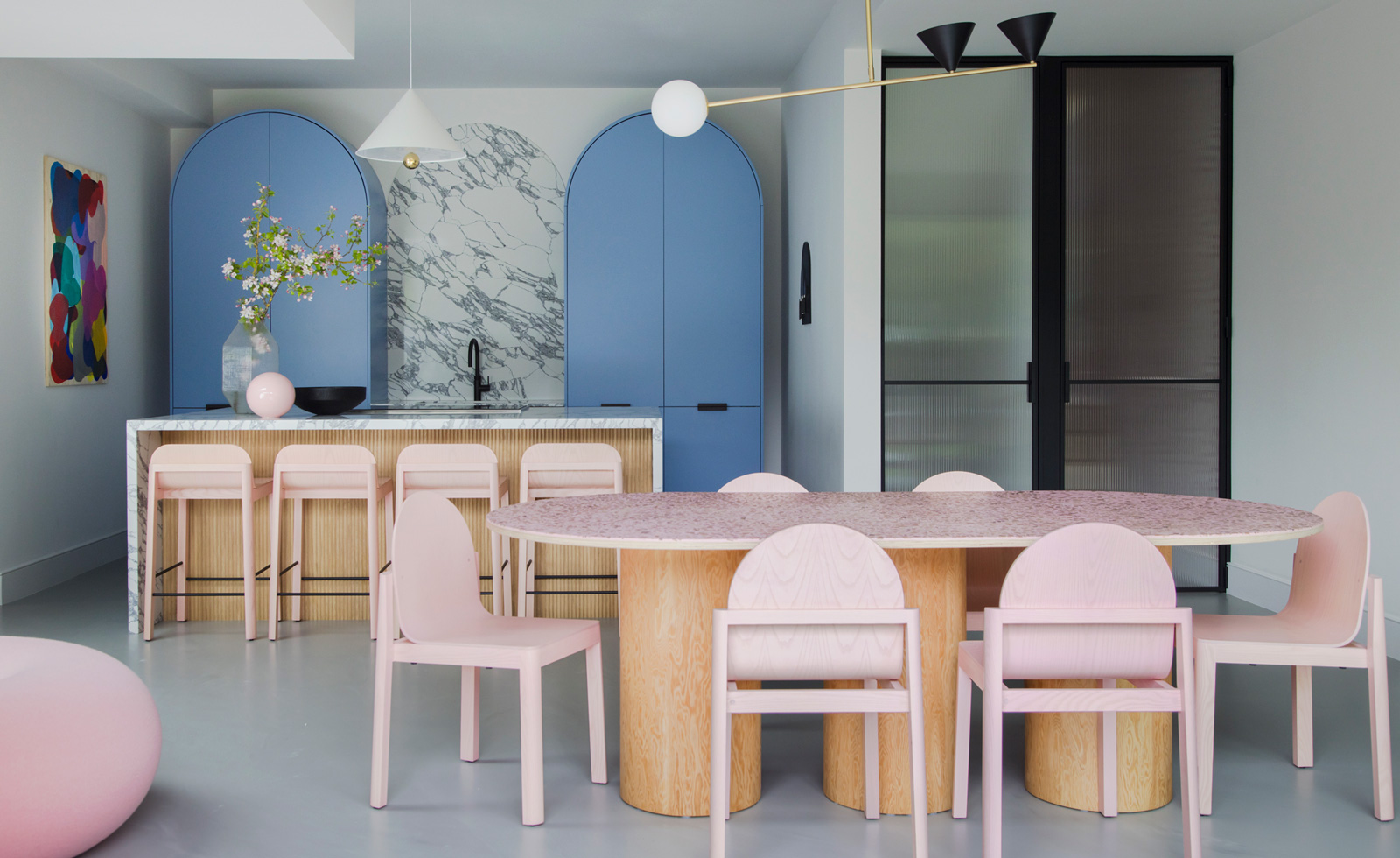 Playful design codes rule in this London Victorian family home
Playful design codes rule in this London Victorian family home2LG Studio embraces colour and comfort in an extensive renovation of a Victorian family home
By Hannah Silver
-
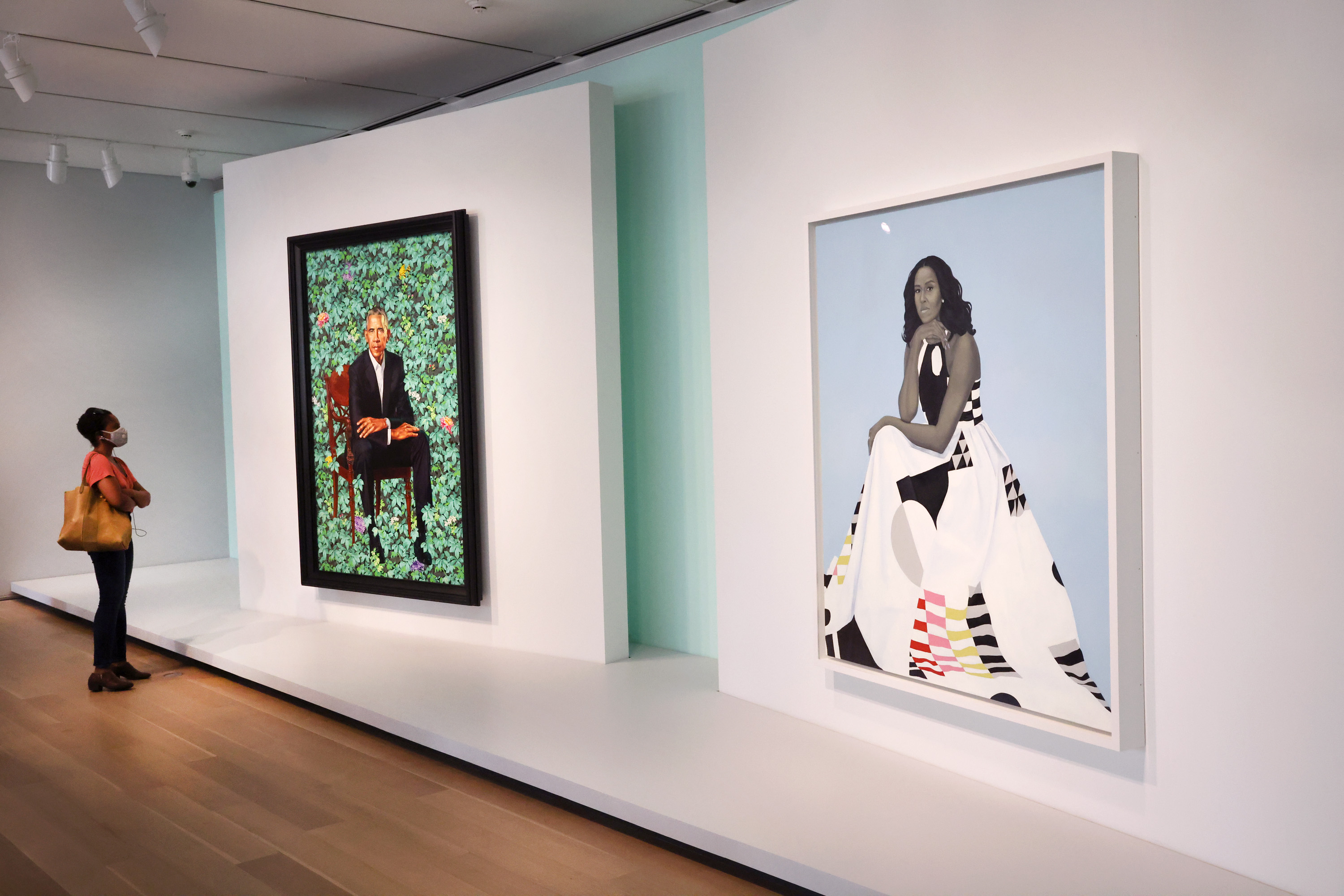 Design at the White House: the creatives working with US Presidents past and present
Design at the White House: the creatives working with US Presidents past and presentInterior designers, fashion designers and artists, whose collaborators have included the White House and its residents, with commissions that range from interior refits to presidential portraits
By Pei-Ru Keh
-
 Essx store opens in New York’s Lower East Side
Essx store opens in New York’s Lower East SideEssx is a new concept and community store by local architecture firm Leong Leong and designer Yossi Shetrit
By Pei-Ru Keh
-
 Eastside Bowl scores big with a maximalist postmodern aesthetic
Eastside Bowl scores big with a maximalist postmodern aestheticDesigned by Cowboy Creative, Eastside Bowl in Nashville, Tennessee, combines American nostalgia and southern charm
By Pei-Ru Keh
-
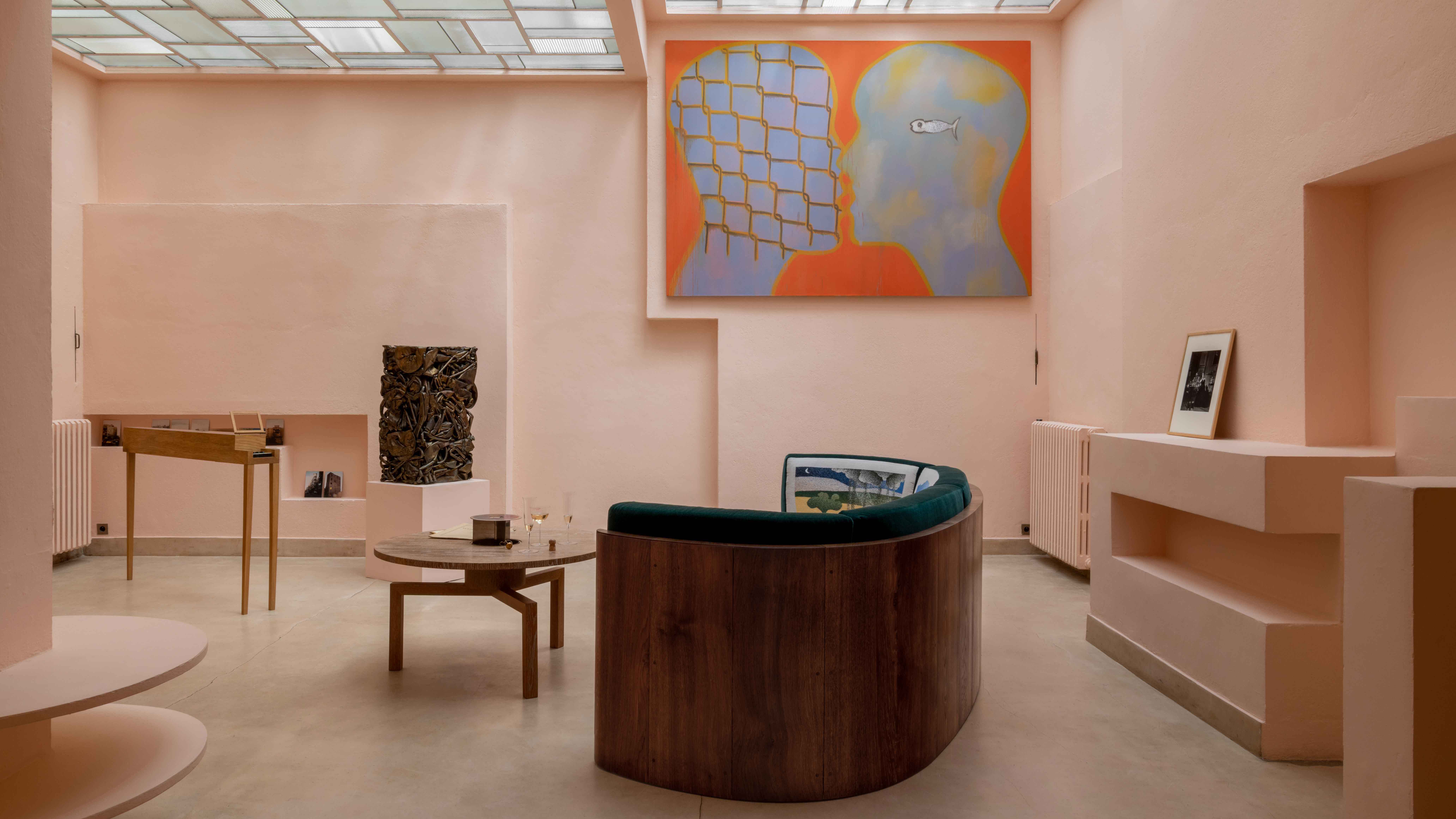 The Design Parade kicks off a creative Summer in the French Mediterranean
The Design Parade kicks off a creative Summer in the French MediterraneanDesign Parade 2023, set between Hyères and Toulon until the fall, features a showcase of design by emerging and established talent
By Jean Grogan
-
 This Los Angeles bolthole by Masastudio and Kelly Wearstler is a carefully considered gem
This Los Angeles bolthole by Masastudio and Kelly Wearstler is a carefully considered gemLaid out like a village, the first collaboration between LA-based Masastudio and Kelly Wearstler is a sculptural family home inspired by Mediterranean architecture
By Pei-Ru Keh
-
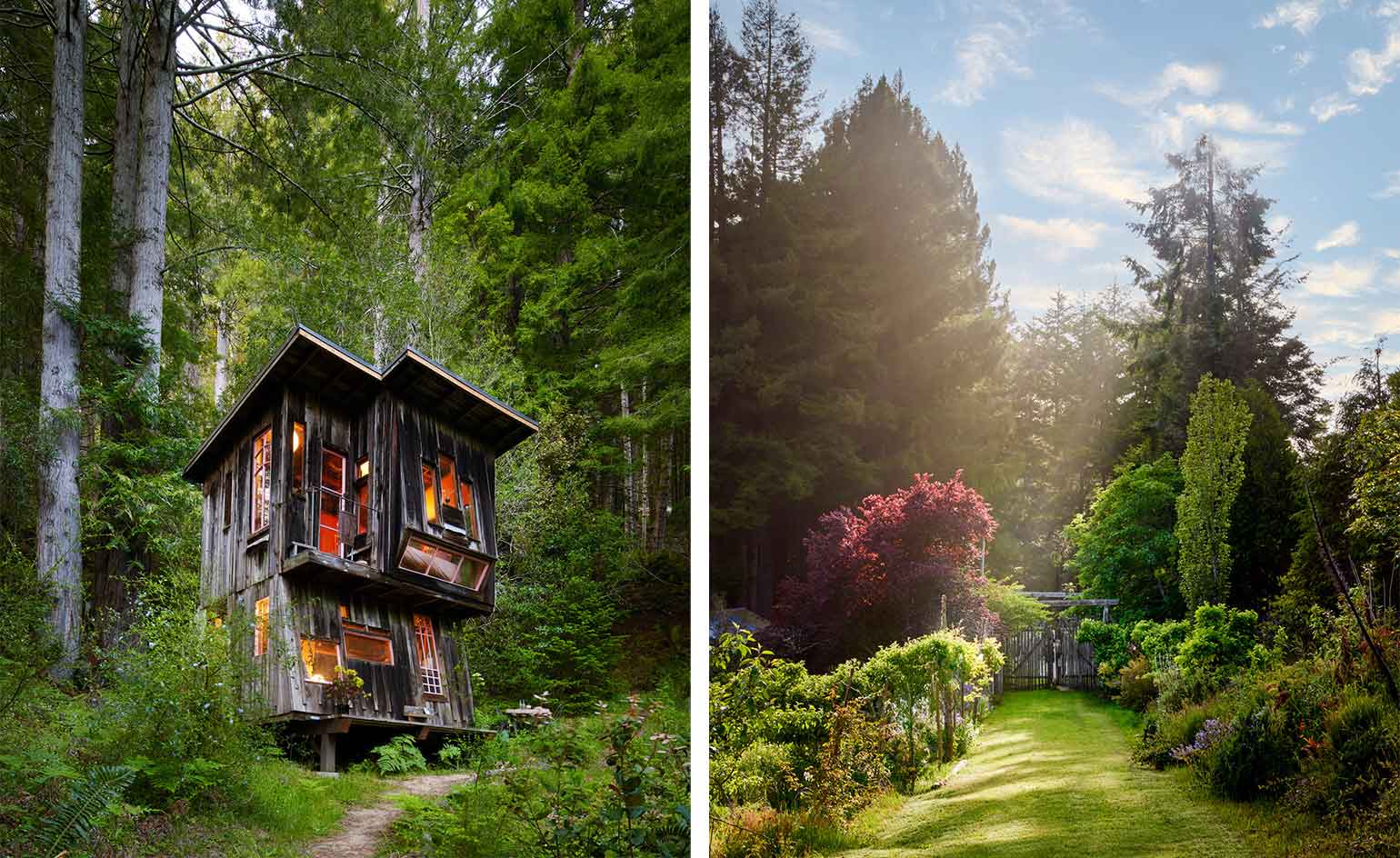 Building Salmon Creek Farm: inside California’s ultimate creative retreat
Building Salmon Creek Farm: inside California’s ultimate creative retreatSalmon Creek Farm's founder, the architecture-trained artist Fritz Haeg, opens the doors to his cultural commune and tells us its story
By Fritz Haeg